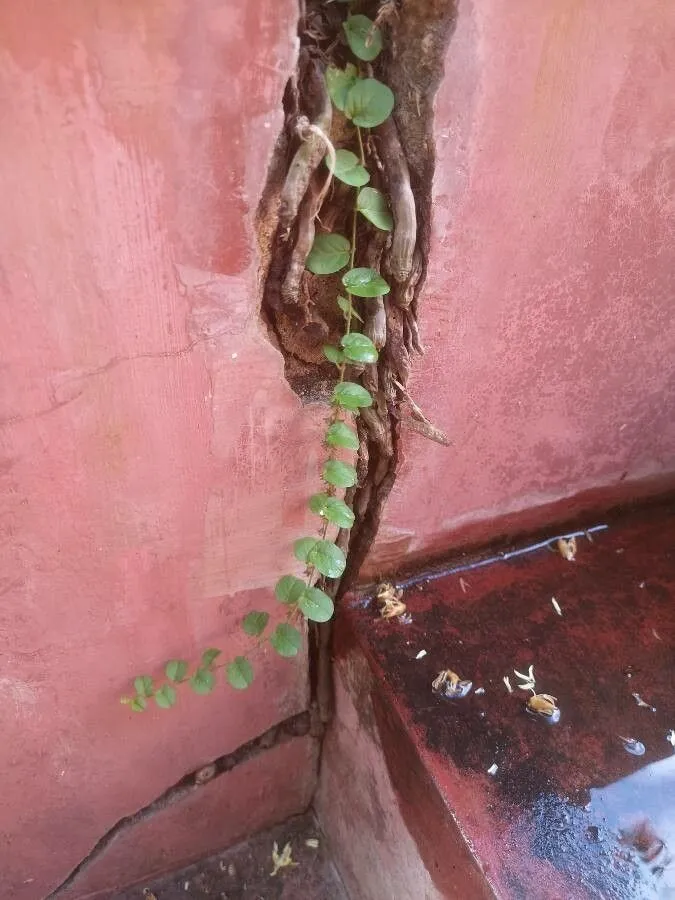
Author: (L.) L.
Bibliography: Sp. Pl. ed. 2: 391 (1762)
Year: 1762
Status: accepted
Rank: species
Genus: Evolvulus
Vegetable: False
Observations: Trop. & Subtrop. America
Agracejo rastrero, scientifically known as Evolvulus nummularius, is a perennial plant esteemed for its trailing and spreading habit. This hardy plant is a member of the Convolvulaceae family and is indigenous to tropical and subtropical regions of the Americas, thriving in warm climates with ample sunlight.
The agracejo rastrero exhibits an attractive mat-forming growth, making it a popular choice for ground cover in gardens and landscaped areas. Its small, rounded leaves are evergreen, providing a lush, green carpet throughout the year. In addition to its foliage, the plant produces charming, funnel-shaped flowers that typically bloom in shades of white or blue, adding a delicate touch of color to the landscape.
One of the key features that make this plant desirable among gardeners is its resilience and low maintenance requirements. Evolvulus nummularius can withstand drought conditions and poor soils, making it ideal for areas with less-than-ideal growing conditions. Furthermore, its low-growing habit helps to suppress weeds, reducing the need for frequent garden upkeep.
In cultivation, agracejo rastrero can be used in various ways, from filling gaps between stepping stones to cascading over the edges of pots or hanging baskets. Its flexibility and adaptability make it a versatile addition to both residential and commercial planting schemes.
To propagate Evolvulus nummularius, gardeners can use cuttings or seeds. When planting, it’s important to select a site with good drainage and ample sunlight, although the plant can tolerate partial shade. Regular watering is essential during the initial establishment phase, but once established, the plant requires minimal additional watering.
In summary, agracejo rastrero (Evolvulus nummularius) is a resilient and versatile ground cover plant that thrives in tropical and subtropical climates. Its year-round greenery and charming flowers, coupled with its ability to thrive in less-than-ideal conditions, make it a valuable addition to a wide range of landscaping projects.
Eng: agracejo rastrero
Por: confete
En: Agracejo rastrero
Pt: Confete
Es: Agracejo rastrero
Taken Nov 29, 2021 by sachin sharma (cc-by-sa)
Taken Sep 22, 2022 by Valverde José M. (cc-by-sa)
Taken Sep 22, 2022 by Valverde José M. (cc-by-sa)
Taken Nov 22, 2022 by Blue Bottle (cc-by-sa)
Taken Aug 28, 2021 by Gambarte Karla (cc-by-sa)
Taken Aug 25, 2021 by Manoj Joshi (cc-by-sa)
Taken Aug 25, 2021 by Manoj Joshi (cc-by-sa)
Taken Aug 25, 2021 by Manoj Joshi (cc-by-sa)
Taken Aug 3, 2020 by Salahaudin Maili (cc-by-sa)
Taken Jun 15, 2021 by gileusa gileusa bustorff (cc-by-sa)
Taken Mar 29, 2022 by r. Unter (cc-by-sa)
Taken Oct 1, 2009 by OTS – Oviedo-Brenes, Federico (cc-by-nc-sa)
Taken Oct 1, 2009 by OTS – Oviedo-Brenes, Federico (cc-by-nc-sa)
Taken Mar 29, 2022 by r. Unter (cc-by-sa)
Taken Sep 29, 2022 by Mohammad Zaman (cc-by-sa)
Taken Sep 29, 2022 by Mohammad Zaman (cc-by-sa)
© copyright of the Board of Trustees of the Royal Botanic Gardens, Kew.
© copyright of the Board of Trustees of the Royal Botanic Gardens, Kew.
© copyright of the Board of Trustees of the Royal Botanic Gardens, Kew.
Growth habit>: Forb/herb, Subshrub
Family: Myrtaceae Author: (F.Muell.) K.D.Hill & L.A.S.Johnson Bibliography: Telopea 6: 402 (1995) Year: 1995 Status:…
Family: Rubiaceae Author: Pierre ex A.Froehner Bibliography: Notizbl. Bot. Gart. Berlin-Dahlem 1: 237 (1897) Year:…
Family: Sapindaceae Author: Koidz. Bibliography: J. Coll. Sci. Imp. Univ. Tokyo 32(1): 38 (1911) Year:…
Family: Asteraceae Author: A.Gray Bibliography: Pacif. Railr. Rep.: 107 (1857) Year: 1857 Status: accepted Rank:…
Family: Fabaceae Author: Medik. Bibliography: Vorles. Churpfälz. Phys.-Ökon. Ges. 2: 398 (1787) Year: 1787 Status:…
Family: Aspleniaceae Author: (Cav.) Alston Bibliography: Bull. Misc. Inform. Kew 1932: 309 (1932) Year: 1932…